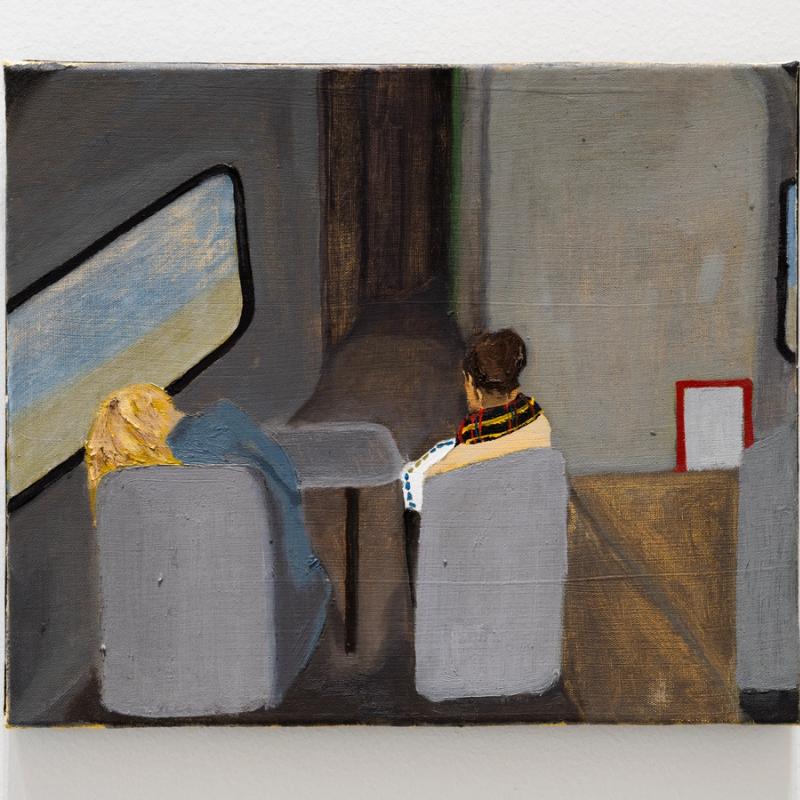Tin Cans and Tech: Five Comics Explore AI
by Qiana WhittedMy pitch to the five incredible cartoonists featured in this issue initially focused on questions about artificial intelligence. I have not yet found my footing in the deeply contentious debates over the widespread applications of generative AI. As an educator, I know better than to treat these technological tools as a novelty, given the growing rate at which my own writing assignments are being refitted as ChatGPT prompts. But wrestling with anxieties about the use of chatbots in the classroom, the dubious ethics of data scraping, and the relentless intrusion of AI “enhancements” also makes me curious about the insights that only art can generate.
How do comics creators help us to think about our daily encounters with so-called technological progress? Must helplessness always set the terms of our relationship to advancements in scientific knowledge that seem to rely so much on extraction and surveillance, while prioritizing profit? Where can we make room for dissent? How do we find the courage to rethink and remake these tools, to loosen their hold?
What emerged from those initial conversations are five comics that touch on these broad questions directly and indirectly, through a variety of perspectives and artistic styles. In “Land of Opportunity,” Ben Passmore revisits a spate of ATM bombings in Philadelphia from 2020 and pieces together the incidents’ aftermath. The comic reflects on the larger cost of vilifying different kinds of resistance in this country, especially among Black people, while the entrenched opportunism that maintains inequality continues. Passmore’s provocative comic anticipates his forthcoming graphic history, Black Arms to Hold You Up: A History of Black Resistance.
Whit Taylor’s “Off-Script” speaks to the breakdown between our online personas and the algorithmic cosplay of Black AI avatars, influencers, and celebrities. As with Taylor’s other brilliant nonfiction comics on race, gender, and health, her expressive account uses a social media “bug” as a starting point for illustrating how these new technologies reinforce troubling racial stereotypes. Her creative approach will be on display in her forthcoming public health history graphic novel, The Greater Good.
Among the most intriguing themes to surface in these comics are the unconventional bonds and unexpected points of connection between people, animals, and machines. Jonathan Todd brings the same poignancy of his middle-grade graphic novel, Timid, to a rollicking standoff between a dog, a cat, and a slice of pizza in “Canine Intelligence.” The story’s two pets, Arf and Pringles, offer a model of cooperation that most humans could surely benefit from. Likewise, in Naima Whitted’s “Bot-Anical Garden,” a Black girl and her robot helper work together to save the crops on their farm. The young engineer eagerly uses technology to solve one problem, only to create a more astonishing mystery.
Children are also at the center of “We Collect Cans for Money” by Ebony Flowers. Her comic follows three siblings and their dad on a visit to a park that is very close to the Baltimore Airport. Flowers’s slice of life emphasizes the five bodily senses in an afternoon of play that is more analog than digital. And yet the sight of these kids crushing tin cans and swinging on the playground in jelly shoes feels like a moment of unsanctioned delight, one that defies the constant rumble and roar of giant planes overhead. Flowers continues her exploration of race, childhood, and environmental crisis in her forthcoming graphic novel, Baltimore Brownfield.
I am grateful to these creators for sharing their creativity and wisdom with me and the readers of Shenandoah.
